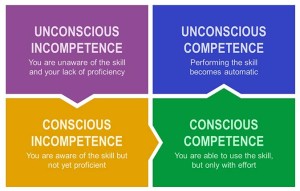Okay so a certain pair of Tang Soo Do instructors, who shall remain nameless, have convinced me to consider entering a TSDMA interschool tournament. Naturally, when it was announced that there would be a special class session to go over tournament etiquette and explain to clueless n00bs like myself what was expected, I resolved to attend. Doing so, I meet some new people, and I made some discoveries over the course of visiting four tournament prep stations:
1) Apparently, “air bo” is not a recognized weapons form.
As a white belt, I’m technically not really even supposed to be doing weapons training yet so I’m not sure that I could even enter this category in tournament. I learned a little of the basic bo hyung with Miss Zaharevich, but not nearly enough to take to competition. For now, I’ll keep working on my “air bo” until I start real bo training in earnest when I regain my green.
2) I can break faux boards. Note to self: Must do more of that.
I have no idea how the reusable breaking boards compare to real wood but who doesn’t love breaking stuff? Trying to focus power in a technique is one thing hitting a bag or pad; it’s something altogether different following through a real break. I stuck with a simple elbow technique but would like to try others when there is more time to experiment.
3) I can score points sparring. Just not against Ms Novicky.
Actually scoring points in a sparring match was a pleasant surprise. Particularly since it was the first time I had even put all of my sparring gear on at the same time. My first match ended with me losing but with a respectable 2-3 score. My second match was entirely one-sided. I don’t think I scored a single point. Not that I stood much chance of scoring any points on her anyway but I’m still struggling with my inhibitions about hitting a woman. In this context, that’s just wrong and disrespectful of my opponent and I have to get over it.
4) I can forget half of a basic hyung on a moment’s notice and mangle it horribly.
The hyung station was the worst. Of course, it’s the one I expected to have the least trouble with. I was prepared to bring on my best pyang ahn cho dan. The soo dos at the end are still a bit awkward, but there are several weeks between now and the tournament.
Problem. Apparently, white belts don’t do pyang ahn cho dan. They’re expected to stick with one of the basic hyung; I went with ki cho hyung il bu since we’d done it in warm ups and who could possibly possibly screw it up? This guy could. Monumentally. Hodor.
 There’s a learning paradigm about consciousness and competence. Before we learn a skill, we are unconscious-incompetent; we don’t even know that we don’t know the skill. As new learners, we learn what it is we don’t know; conscious-incompetent. With practice we reach conscious-competence; we can do the skill with effort as long as we concentrate on it. The goal is to reach unconscious-competence; performing the skill naturally without having to concentrate on each aspect of the skill. The paradigm is cyclic as increased competence reveals subtleties that were previously hidden and can be further honed.
There’s a learning paradigm about consciousness and competence. Before we learn a skill, we are unconscious-incompetent; we don’t even know that we don’t know the skill. As new learners, we learn what it is we don’t know; conscious-incompetent. With practice we reach conscious-competence; we can do the skill with effort as long as we concentrate on it. The goal is to reach unconscious-competence; performing the skill naturally without having to concentrate on each aspect of the skill. The paradigm is cyclic as increased competence reveals subtleties that were previously hidden and can be further honed.
Today’s lesson in humility was learning how easily it is to slip back from conscious-competence to conscious-mind-boggling-incompetence when focus is lost.
5) My ninja invisibility skills do not work on Mrs. Krantz.
At the very end of the class, individuals and groups performed various hyung starting with and incredibly complex black belt hyung by Mr. Pomes the younger and wending through groups of similar belts. I was mercifully spared doing hyung with the 7 year old, 30 pound, second and third gup orange belts and thought I might just slide by as the only white belt and the only adult below green belt. Not a chance.
In fairness, my ninja skills have had better days. I was called up alone but given the option to have some company for support. I’m pretty sure I could have named any hyung through chil sung e lo and that would have been acceptable at this point. My first instinct was to try pyang ahn cho dan but I knew I had to redeem my earlier ki cho hyung il bu.
There was a certain symmetry in starting with a very complex hyung executed by a black belt and ending with the first basic hyung by a white belt and I can only hope I did it justice that time around.
Exercise on this day: Ahneso Phakuro Cha Gi: 32 Kicks (L&R) · Ahp Cha Gi: 32 Kicks (L&R) · Crunches: 20 · Hyung: Ki Cho Hyung Il Bo · Leg-raises: 20 · Push-ups: 20 · Sparring · Tollyo Cha Gi: 32 Kicks (L&R) · Yup Cha Gi: 32 Kicks (L&R)

